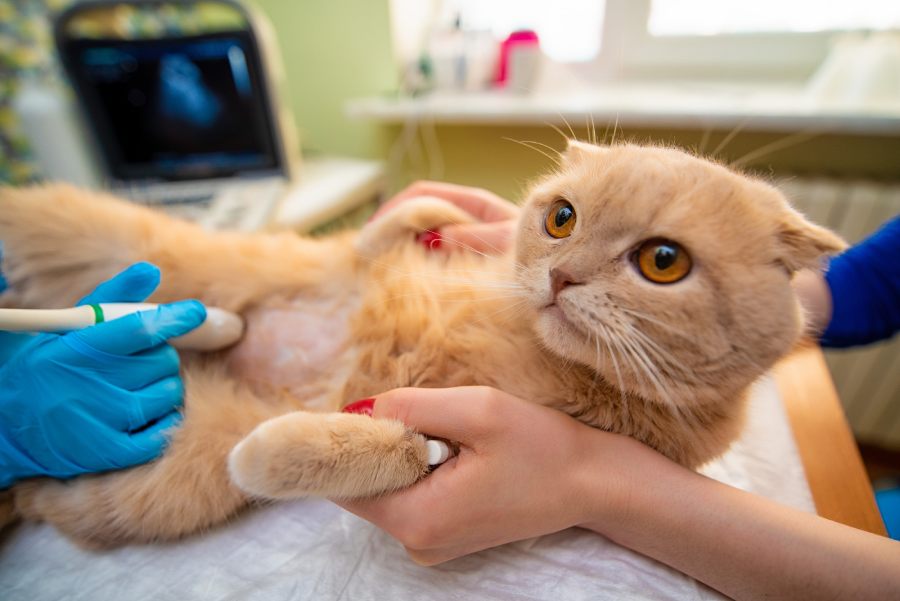Pet Ultrasonography in Corpus Christi, TX
Thanks to ultrasound technology, we can diagnose organs, including the heart, kidneys, liver, gallbladder, bladder, spleen, and intestines, inside your pet.
Pet ultrasound, or veterinary ultrasound, is a non-invasive diagnostic imaging technique that uses sound waves to create images of a pet’s internal organs, tissues, and structures. This technology emits high- frequency sound waves that bounce off the pet’s internal structures. Then a computer converts the echoes into visual images.
Pet ultrasound is commonly used to evaluate organs such as the liver, spleen, kidneys, urinary bladder, heart, and blood vessels. It is particularly useful for identifying abnormalities such as tumors, cysts, and stones and monitoring pregnancy in female pets. Examples of how your veterinarian uses pet ultrasound include:
- Confirming pregnancy (as early as 25 days gestation)
- Monitoring fetal health
- Detecting pathology or disease in geriatric patients (referred to as global ultrasound)
- As a guide for obtaining samples such as abdominal masses and sterile urine samples
- Identifying the cause of heart murmurs
The procedure is generally painless and does not require anesthesia or sedation in most cases. The pet may need to be shaved in the area being examined to ensure a clear image. During the procedure, a handheld transducer is placed on the pet’s skin and moved around to capture images from different angles.

Pet ultrasound is considered a safe and reliable diagnostic tool for veterinarians, and it can provide valuable information about a pet’s health and medical conditions. However, it’s essential to note that there may be better choices for some situations, and other imaging techniques, such as X-rays or MRI, may be necessary. Your veterinarian can help determine the best course of action for your pet’s specific needs.
